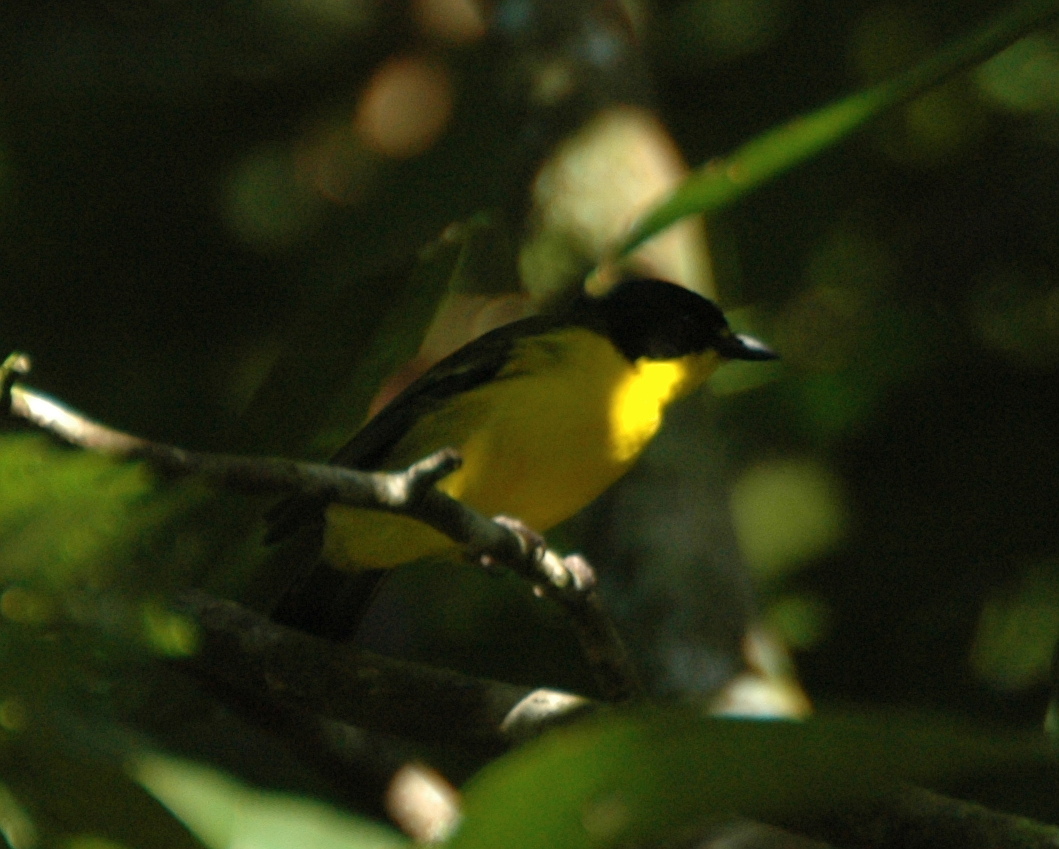Tongan Tropical Moist Forests
The ecoregion’s land area is provided in units of 1,000 hectares. The conservation target is the Global Safety Net (GSN1) area for the given ecoregion. The protection level indicates the percentage of the GSN goal that is currently protected on a scale of 0-10. N/A means data is not available at this time.
Bioregion: Fiji & Tongan Tropical Islands (OC6)
Realm: Oceania
Ecoregion Size (1000 ha):
94
Ecoregion ID:
631
Conservation Target:
27%
Protection Level:
6
States: Tonga, Niue
The black and yellow Tongan whistler is unique to the scattered islands of Tonga. The plants and animals of this volcanic archipelago represent a classic oceanic island biota, with pigeons, honeyeaters, whistlers, geckos, bats, and plants that disperse well across oceans. Archeological evidence suggests, however, that when people first arrived in the islands there was a giant land iguana and 23 birds, including parrots, pigeons, and megapodes (ground birds with large feet), that were all larger than the ones still present today.
Tongan islands are volcanic, though the southern island of 'Eua is believed to be a fragment of the ancient Gondwanaland supercontinent and may harbor some ancient invertebrates and plants. Niue, a far-flung outlier to the group, is a classic makatea island, upraised limestone on a volcanic base.

The flagship species of the Tongan Tropical Moist Forests ecoregion is the Tongan whistler. Image credit: Creative Commons
Tonga’s tropical moist forest is dominated by trees such as Diospyros spp., Rhus taitensis, Alphitonia zizyphoides, Calophyllum neo-ebudicum, Elattostachys falcata, Litsea mellifera, Pisonia grandis, Pittosporum arborescens, Garuga floribunda, Ficus obliqua, Pleiogynium timoriense, Cryptocarya turbinata, and Maniltoa grandiflora. Understories often have dense areas of staghorn fern with the shrubs Macropiper puberulum and Psychotria insularum. There are 419 angiosperm plants and fern species with around 3% endemism.
Tonga has nine geckos, nine skinks, the Pacific tree boa, and the banded iguana, the latter purported to have rafted from the Americas long ago. The endemic Tongan megapode is the only remaining bird of the four species in its family: these flightless birds with large eggs were very vulnerable to hunting by human and introduced predators after their arrival on the islands. There has been effort to conserve their declining population by translocating their eggs to nearby Fonualei and Late islands.
Most native habitat on Tonga’s 170 islands has been cleared through thousands of years of settlement and subsistence agriculture. A few uninhabited and steep volcanic islands, such as the islands of Late, Kao-Tonga, and Tofua still support large areas of native forest. ‘Eua also retains native forest on sizeable areas around its steep terrain. Even on uninhabited islands, there is ongoing clearing for subsistence agriculture and commercial kava plantations. Invasive rats and cats greatly impact populations of native species, such as nesting birds, invertebrates, lizards, and native plants (through seed predation).
The priority conservation actions for the next decade are to: 1) protect native forest on key biodiversity area islands of Late, Kao-Tonga, Tofua, and ‘Eua through community-based conservation efforts; 2) expand invasive rat eradication on smaller islands, such as that has been achieved on Malinoa and Motutapu; and 3) increase efforts, in partnership with local communities, to diminish predation by invasive and poaching of the remnant populations of the Tongan megapode.
Citations
- *CEPF. 2007. Ecosystem Profile: Polynesia/Micronesia Biodiversity Hotspot. Critical Ecosystem Partnership Fund, Washington, DC.
- Drake DR, WA Whistler, TJ Motley. 1996. Rain forest vegetation of Eua Island, Kingdom of Tonga. New Zealand Journal of Botany 34:65-77.
- Gill BJ. 1987. Notes on the birds, reptiles and mammals of Tongatapu and Eua, Tonga. Notornis 34:217-223.
- *Male T. 2018 Tongan Tropical Moist Forest. Accessed 1 June 2018 at https://www.worldwildlife.org/ecoregions/oc0114.
- *Mueller-Dombois D, FR Fosberg. 1998. Vegetation of the Tropical Pacific Islands. Springer Press, New York.



